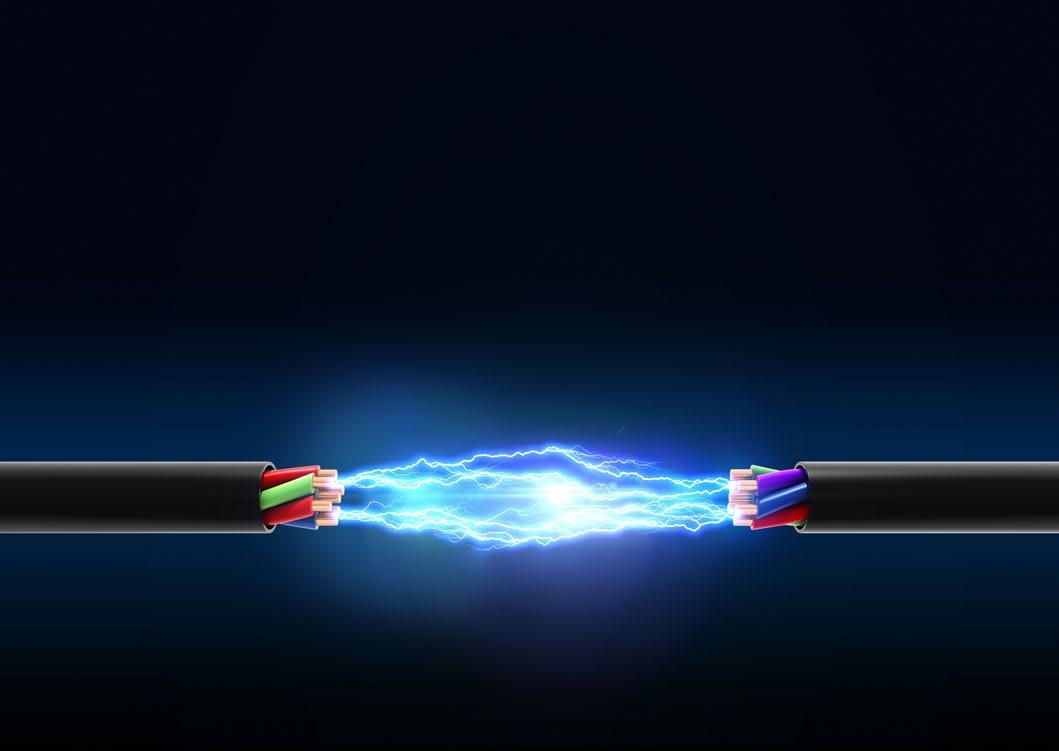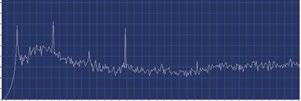
6 minute read
Inspection Methods to Determine Potential Arc Flash
ARC FLASHES CAN BE CONSIDERED AS SHORT CIRCUITS THROUGH THE AIR. THEY PRODUCE TREMENDOUS STORED UP ENERGY THAT TRAVELS OUTWARD FROM ELECTRICAL EQUIPMENT, WITH TEMPERATURES AS HIGH AS 19,000 DEGREES CELSIUS AND A FORCE EQUIVALENT TO BEING HIT BY A HAND GRENADE. IF AN ARC FLASH DOESN’T KILL YOU, IT WILL SEVERELY BURN OR INJURE YOU, COULD CAUSE HEARING AND MEMORY LOSS. WE REVIEW THE OPTIONS TO TEST FOR ARC FLASH POTENTIAL AND PREVENT INCIDENTS.
The science of safety
Arc flash incidents can result from poor work habits, dropping tools or accidental contact with energised equipment. However, some conditions that produce arc flash potential within enclosed cabinets can be detected before creating incidents. These conditions are arcing, tracking, and corona. While infrared thermography will detect heat generated by arcing and in most instances tracking, it does not sense corona. If cabinets are enclosed, unless there is an infrared (IR) test port, it is highly unlikely that infrared will detect the presence of emissions. Also, to view components within enclosed electrical cabinets, it’s necessary to conform to PPE standards. Therefore in many situations IR inspectors must wear cumbersome clothing and hoods and perform required procedures to open cabinets for inspection. This can be very time-consuming and, in hot weather, very uncomfortable. An integrated approach incorporating infrared, and ultrasound is recommended for detecting arc flash potential. Arcing, tracking, and corona emissions produce ionisation. Ionisation has byproducts: ozone and nitrogen oxides. These combine with moisture to produce nitric acid, which is destructive to most dialectics and certain metallic compositions, resulting in corrosion. Electric condition monitoring aims to detect the presence of these events before flashover occurs or before they produce an arc flash incident when a cabinet is opened. Airborne/structure-borne ultrasound technology is ideally suited for detecting these emissions since the ionisation process produces ultrasound. Ultrasonic instruments sense between 20-100 kHz and use heterodyning to translate the ultrasonic emissions into the audible range. These portable instruments provide audio signal information via headphones with a visual display of signal intensity via a meter or Liquid Chrystal Display (LCD).
Portable instruments
Typically, an operator will scan around the door seams and air vents of enclosed electrical cabinets with the scanning module while listening through headphones and observing a display panel. Arcing, tracking, and corona all have distinct sound qualities that can be heard. If there are no air paths, the inspector will use the wave-guide to probe around the cabinet wall. As the ultrasound moves from airborne to structure-borne, there can be possible changes in wave characteristics. The operator will change the frequency from 40 kHz (effective for airborne scans) to 25 kHz. Should there be a need to analyse these patterns further, the sounds can be recorded and played back on spectral analysis software. This enables inspectors to observe subtle problems that might be missed by viewing a screen without sound.
Low voltages
Which voltages and on what type of equipment is ultrasound most effective? The answer is not simple. Firstly, determining the definitions of low, mid, and high voltage is relative. The main concern in low voltage equipment is arcing. Typically 110, 220, and 440 volt systems are inspected with infrared imaging and/or spot radiometers for temperature changes. Hot spots, usually indicating resistance, can indicate a potential for equipment failure or a possible fire hazard. When
arcing occurs, it is often accompanied by heat; however, it is not always possible to detect a hot spot if the equipment is covered. Ultrasound will hear arcing in circuit breakers, switches, contacts and relays. In most instances, quickly scanning a door seal or vent will detect the ultrasound emission. Listening for internal arcing in circuit breakers and switches can be accomplished with the contact probe. For example, touch a circuit breaker switch with the contact probe. The most effective method of low voltage inspection involves combining infrared imaging with an ultrasonic probe.
Mid and high voltages
Higher voltages often produce more potential for equipment outage. Problems such as arcing, destructive corona, or tracking (sometimes referred to as “baby arcing”) and corona, as well as partial discharges and mechanical looseness, all produce detectable ultrasound that warn of impending failure. Detecting these emissions is relatively easy with ultrasound. The acoustic difference among these potentially destructive events is the sound pattern. Arcing produces erratic bursts, with sudden starts and stops of energy, while corona is a steady “buzzing” sound. Destructive corona has a buildup and drop-off of energy resulting in a buzzing sound accompanied by subtle popping noises. While scanning for these emissions, use a parabolic reflector. These accessories can more than double the detection distance of the standard scanning modules.

Analysing recorded signals
While it’s relatively easy to determine arcing, tracking, or corona by the sound pattern, there can be occasions where it may prove confusing. It’s possible that a strong buzzing sound might be nothing more than mechanical looseness.

Spectral analysis and time-domain can be useful tools in analysing electric emissions. Since all Ultraprobe instruments heterodyne ultrasound down into audible ranges, Ultraprobe 10000 may be used to record sounds. You must use a suitable recording device that has a suitable bandwidth in the lower frequencies. Digital voice recorders aren’t acceptable, as they only record signals above 300 Hz, which isn’t low enough for the 50 or 60 Hz peaks. Laptop computers, MP3 recorders, or quality cassette recorders work well for recording signals in the field. When recording signals, you need to ensure the signal is not distorted. On analogue instruments, you shouldn’t let the signal go over 50% of full scale on the signal strength indicator. On digital instruments, try to maintain the signal strength of between four to six segments of the bar graph. Sounds can be downloaded to a PC and viewed as a spectrum or time series for analysis. It’s important to examine both spectrum and time-domain images when making an evaluation. Examining time-domain images can also help. With corona, you’ll have a uniform band of signal with very few peaks that extend above the average band. With tracking, you will begin to see peaks created by the discharges extend above the average band. Arcing will show several “bursts” of energy which correspond with the discharges. In all cases, both the spectrum and the time-domain should be examined before the final determination is made.
New on-line condition monitors

While the great majority of energised electrical equipment inspections incorporate portable instruments, these inspections are limited in their ability to protect equipment from failure or having an arc flash potential go undetected. The limitations are time-based. If an inspector is testing at the time any of these incidents is occurring, there is a good chance they will be detected and reported for corrective action. But, unlike mechanical conditions, which are usually detected first and then trended to specific action levels, once arcing, tracking, or corona are present, there is potential for failure and arc flash that can occur at any time. Therefore, continuous on-line monitoring of enclosed electrical equipment is needed. An electrical cabinet monitor is mounted on the internal side of a door or wall facing the components. Utilising an airborne scanner, a threshold level is set. Should an event of arcing, tracking, or corona occur, the sound level will be above the ambient threshold and be detected. Having continuous monitoring, that is not operator dependent, has clear advantages.
Mark Goodman
VP of Engineering, UE Systems, Inc www.uesystems.com.au
VISIT ULTRA-TEK TO FIND OUT MORE ON UE SYSTEMS
www.uesystems.com.au support@ultra-tek.com.au










